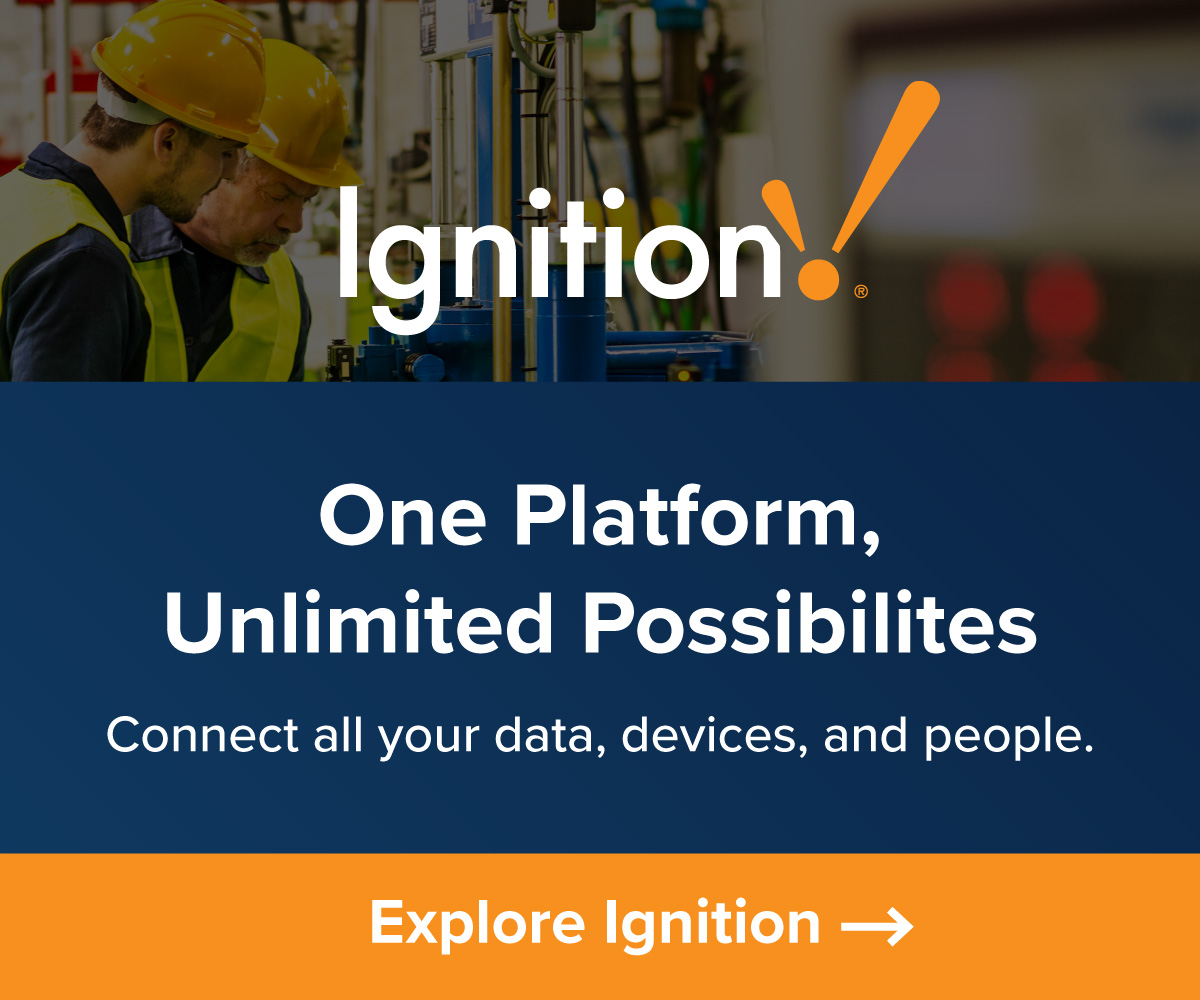by Gary Mintchell | Jun 11, 2024 | Asset Performance Management, Operations Management, Services
Fluke Reliability partners with Verusen to Drive Predictive Maintenance and Inventory Optimization
The new trend for 2024 involves spreading applications from the factory floor specifically to maintenance and repair and parts. Here is a partnership designed to enhance spare parts inventory plus predictive maintenance. It does make sense to bring those two together. I sold a program once a long time ago that would have been a first step along this journey.
- Verusen enables visibility into customers’ spare parts and inventory data across the enterprise
- This complements Fluke Reliability’s commitment to providing enhanced visibility into enterprise asset management operations
- The two companies provide customers with an expansive toolset to shift from reactive to predictive maintenance utilizing AI functionality
Fluke Reliability has entered into a formal partnership agreement with Verusen. The agreement combines Verusen’s AI-driven visibility of MRO (Maintenance, Repair and Operations) spare parts inventory and back-office functions with Fluke Reliability’s AI-powered enterprise asset management solutions to increase uptime, enhance maintenance and reliability operations efficiency, and drive customer productivity.
Verusen has been added to Fluke Reliability’s Industry and Technology partner program which is designed to enable customers to better integrate and automate connected reliability workflows for improved operations. This move underpins both companies’ commitment to helping customers shift to more proactive maintenance and reliability operations, maximizing uptime and accelerating efficiency worldwide.
by Gary Mintchell | May 13, 2024 | Asset Performance Management, Technology
Someone else is going to transform the industry. OK, I have worn many Augmented Reality glasses in demos at trade shows. They are cool, but it still looked like a solution searching for a problem. Meanwhile, the Apple Vision Pro supports both AR and Virtual Reality (VR). Everyone is talking about how cool the VR part is for immersive movies. No one has been talking about the AR capabilities.
Until, now.
Averroes.ai has introduced an what they call an “innovative approach to manufacturing that is set to transform the industry.” They are combining the ability to talk to machines sucking in data and visualizing it in real time using the Apple Vision Pro in AR mode.
- Averroes.ai uses machine learning and AI to detect, classify, and segment defects, and carry out predictive maintenance.
- Manufacturers can even spot defects along production lines without direct observation, all without the need to be seated in a back office.
- This integration facilitates instant access to production data and charts, empowering on-the-spot monitoring, defect analysis, statistical insights, and yield optimization, all with unparalleled ease and accuracy, right on the factory floor.
Averroes.ai’s innovative approach is rooted in being data agnostic, a concept that ensures seamless integration of various data types. Whether it’s images, tabular data, or time series, their system effortlessly accommodates them all.
Business reasons. According to recent reports, the global AI Industrial Vision Inspection Service market is valued at US$ 332 million in 2022. What’s more staggering is its projected growth trajectory. By 2029, this market is expected to skyrocket to a value of US$ 1156.2 million, boasting a compound annual growth rate of 19.7%.
Tareq, CEO of Averroes.ai, told me when I asked about walking through a manufacturing plant wearing one of these things, “The Apple Vision Pro uses augmented reality (AR) to enhance, not hinder, your interaction with the environment. Its AR display is designed to subtly complement your real-world view. Whether it’s showing data labels, instructions, or visual enhancements, everything is carefully designed to be unobtrusive, blending seamlessly into your surroundings.”
Second, when will it actually be available? “Averroes is an AI platform that now allows manufacturers to automatically generate visual inspection APIs from models, including anomaly detection, using a no-code approach. With minimal data and no need for extensive support, manufacturers can develop these models efficiently, utilizing the Apple Vision Pro as their imaging system. The platform is not open to the public and is available exclusively to enterprise clients with a subscription.”
Why? There are other, cheaper solutions. “There has always been a demand for inspecting products in environments where items vary and do not conform to a uniform production line. The Apple Vision Pro and Averroes platform are well-suited to address this need. The Apple Vision Pro offers a cost-effective alternative to traditional fixed-installation industrial cameras and delivers superior image quality and resolution, which is crucial for inspecting products in varying lighting conditions.”
“Although Averroes can also integrate with other, less expensive AR sets, the development kit that comes with the Apple Vision Pro is among the best available, making it an excellent choice for manufacturers tasked with inspecting diverse products in non-standard settings.”
by Gary Mintchell | Mar 1, 2024 | Asset Performance Management, News, Operations Management
Every time I participate in a survey the last page is an invitation to do my own survey. I think every industry marketing person has take them up on the offer. Limble CMMS has released State of Manufacturing and Facilities Maintenance Report, which reveals insights from manufacturing and facility maintenance professionals on the top challenges they face today and what their immediate focus is on. Some of these are no-brainers; but some are interesting.
Some key stats from the report include:
- To embrace a shift toward advanced technologies, 91% of manufacturing professionals said they are shoring up their data collection and analysis capabilities. Machine sensors and IoT technology are important tools for the consistent and accurate data collection needed to leverage advanced technologies.
- More than half (51%) of respondents chose excessive downtime, aging infrastructure or workforce issues (e.g. lack of skilled workers) as one of their top three current challenges
- In addressing downtime issues, 78% of respondents say they are supporting preventive maintenance initiatives
- In addressing workforce challenges, 55% of respondents say they are focusing on recruitment and retention, and 52% are looking to increase pay and benefits for workers.
- Proactive maintenance (72% of respondents) and investing in new equipment (69% of respondents) are the top two ways in which respondents are addressing the issue of aging infrastructure.
- 69% of manufacturing and facility maintenance professionals said they are focused on diversifying suppliers to address challenges within their supply chain.
by Gary Mintchell | Feb 20, 2024 | Asset Performance Management, Generative AI, News, Operations Management, Software
Generative artificial intelligence (AI) popularized by ChatGPT is this year’s big buzz in industrial technology. Predictive maintenance seems to be one logical place where finding more powerful computation can be supportive.
Siemens has worked with Microsoft closely for decades. It has also recently acquired Senseye. Here is news about using GenerativeAI for enhancing a predictive maintenance solution.
In short:
- Enhancing proven machine learning capabilities with generative AI creates a robust, comprehensive predictive maintenance solution that leverages the strengths of both.
- Using a conversational user interface, manufacturers can take proactive actions easily, saving both time and resources.
- New generative AI functionality in Senseye Predictive Maintenance makes predictive maintenance conversational.
Siemens is releasing a new generative artificial intelligence (AI) functionality into its predictive maintenance solution – Senseye Predictive Maintenance. This advance makes predictive maintenance more conversational and intuitive. Through this new release of Senseye Predictive Maintenance with generative AI functionality, Siemens will make human-machine interactions and predictive maintenance faster and more efficient by enhancing proven machine learning capabilities with generative AI.
Senseye Predictive Maintenance uses artificial intelligence and machine learning to automatically generate machine and maintenance worker behavior models to direct users’ attention and expertise to where it’s needed most. Building on this proven foundation, now a generative AI functionality is being introduced that will help customers bring existing knowledge from all of their machines and systems out and select the right course of action to help boost efficiency of maintenance workers.
Currently, machine and maintenance data are analyzed by machine learning algorithms, and the platform presents notifications to users within static, self-contained cases. With little configuration, the conversational user interface (UI) in Senseye Predictive Maintenance will bring a new level of flexibility and collaboration to the table. It facilitates a conversation between the user, AI, and maintenance experts: This interactive dialogue streamlines the decision-making process, making it more efficient and effective.
In the app, generative AI can scan and group cases, even in multiple languages, and seek similar past cases and their solutions to provide context for current issues. It’s also capable of processing data from different maintenance software. For added security, all information is processed within a private cloud environment, safeguarded against external access. Additionally, this data will not be used to train any external generative AI. Data doesn’t need to be high-quality for the generative AI to turn it into actionable insights: With little to configure, it also factors in concise maintenance protocols and notes on previous cases to help increase internal customer knowledge. By better contextualizing information at hand, the app is able to derive a prescriptive maintenance strategy.
The new generative AI functionality in the Software-as-a-Service (SaaS) solution Senseye Predictive Maintenance will be available starting this spring for all Senseye users. The combination of generative AI and machine learning creates a robust, comprehensive predictive maintenance solution that leverages the strengths of both.
by Gary Mintchell | Dec 13, 2023 | Asset Performance Management, Operations Management
Most of us are still familiar with the variety of Fluke meters we grew up with. The company made a few acquisitions and developed the Fluke Reliability business unit. They do some cool stuff. Here is the latest news from them in the maintenance and reliability front.
- Fluke Reliability has launched the VibXpert 3 Balancer, a next-generation smart field balancing tool that can diagnose and correct rotational unbalance in the field or on the floor.
- The VibXpert 3 Balancer is equipped with six synchronous channels, making it one of the fastest and most accurate solutions available, and its user-friendly interface makes it accessible to technicians of all skill levels.
- The VibXpert 3 Balancer enhances productivity, increases uptime, and reduces maintenance costs, which is especially important in today’s challenging business environment/skills shortage.
This state-of-the-art device can diagnose and correct rotational unbalance in the field or on the floor, solving a leading cause of failure in rotating assets like fans, pumps, and motor-driven tools.
Unlike the current generation tools on the market, the VibXpert 3 Balancer is equipped with six synchronous channels, so it can record multi-channel vibration measurements simultaneously. This lets users quickly take measurements from multiple angles, compare them to historical data, and identify the root cause of the unbalance directly at the source. As a result, it’s one of the fastest and most accurate solutions available.
Detecting unbalance issues early prevents them from developing into costly, hazardous problems. The result is increased uptime, improved productivity and reduced maintenance costs. The interactive interface functions like a tablet, making it accessible to today’s workforce. Its robust and durable design withstands extreme temperatures, moisture, and dust, making it suitable for fieldwork.
by Gary Mintchell | Jul 11, 2023 | Asset Performance Management, Data Management, Manufacturing IT, Operations Management
Data management and analytics are two consistent current trends in the industrial / manufacturing technology market. This announcement from Emerson, now calling itself “a global software and engineering leader,” discusses how they brought these to asset management.
AMS Device Manager Data Server securely extends intelligent field device data to outside systems to make it easier for reliability and maintenance teams to further capitalize on modern advanced analytics software, providing a step change in operational efficiency and smart manufacturing.
AMS Device Manager Data Server publishes intelligent field device data nearly instantaneously to industrial software analytics solutions already in use by customers, eliminating the need for complex custom data integration and manual workarounds that often cause delayed results and siloed data. This data is relayed via secure industry protocols.
AMS Device Manager Data Server makes it easy to import critical instrument and valve data into common dashboarding tools and applications like Microsoft PowerBI, Emerson software tools such as the Plantweb Optics platform, Plantweb Insight, Aspen MTell and AspenTech Inmation, plant historians and others.





